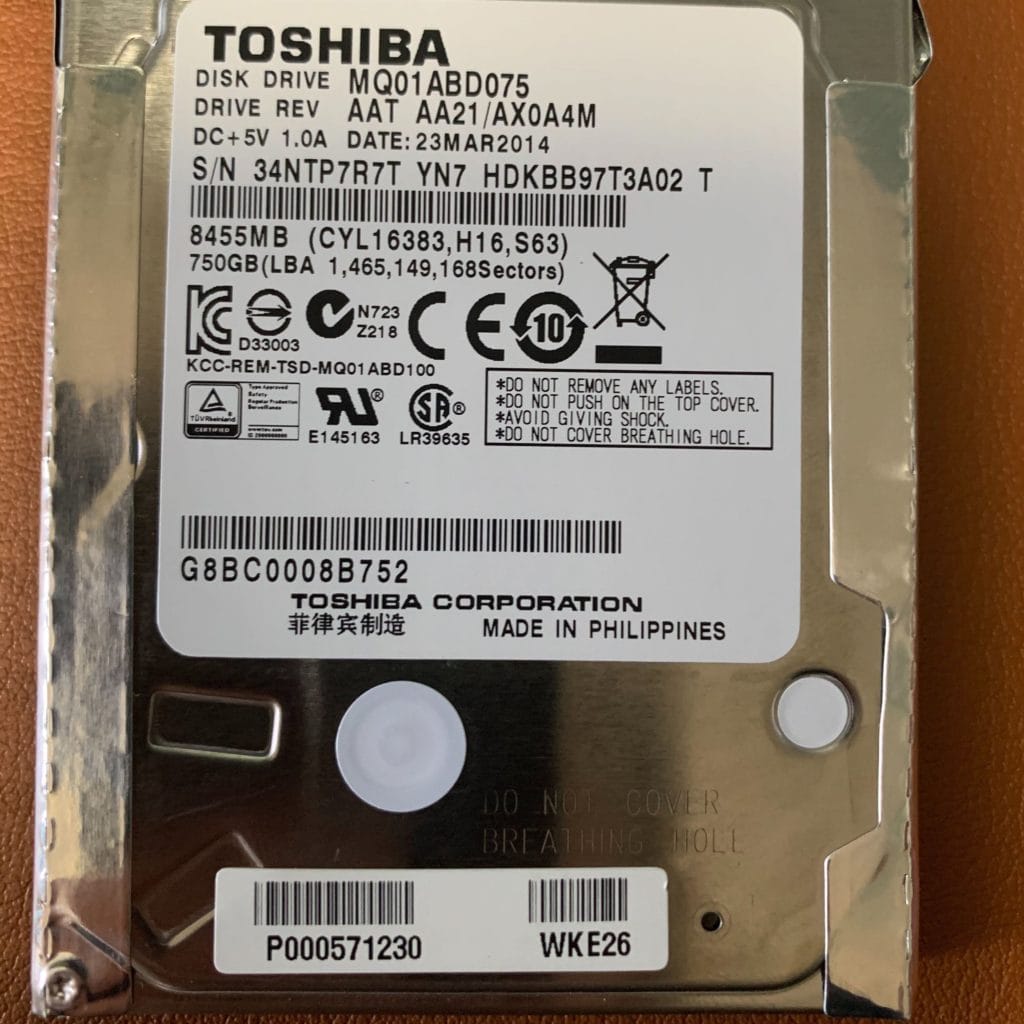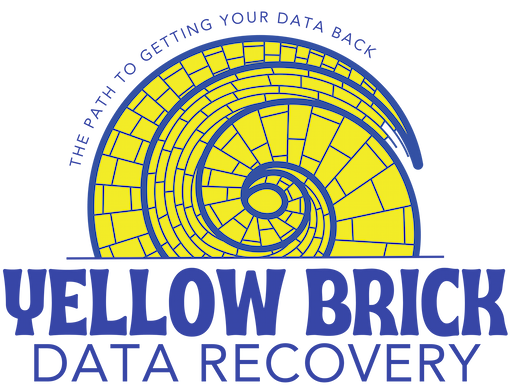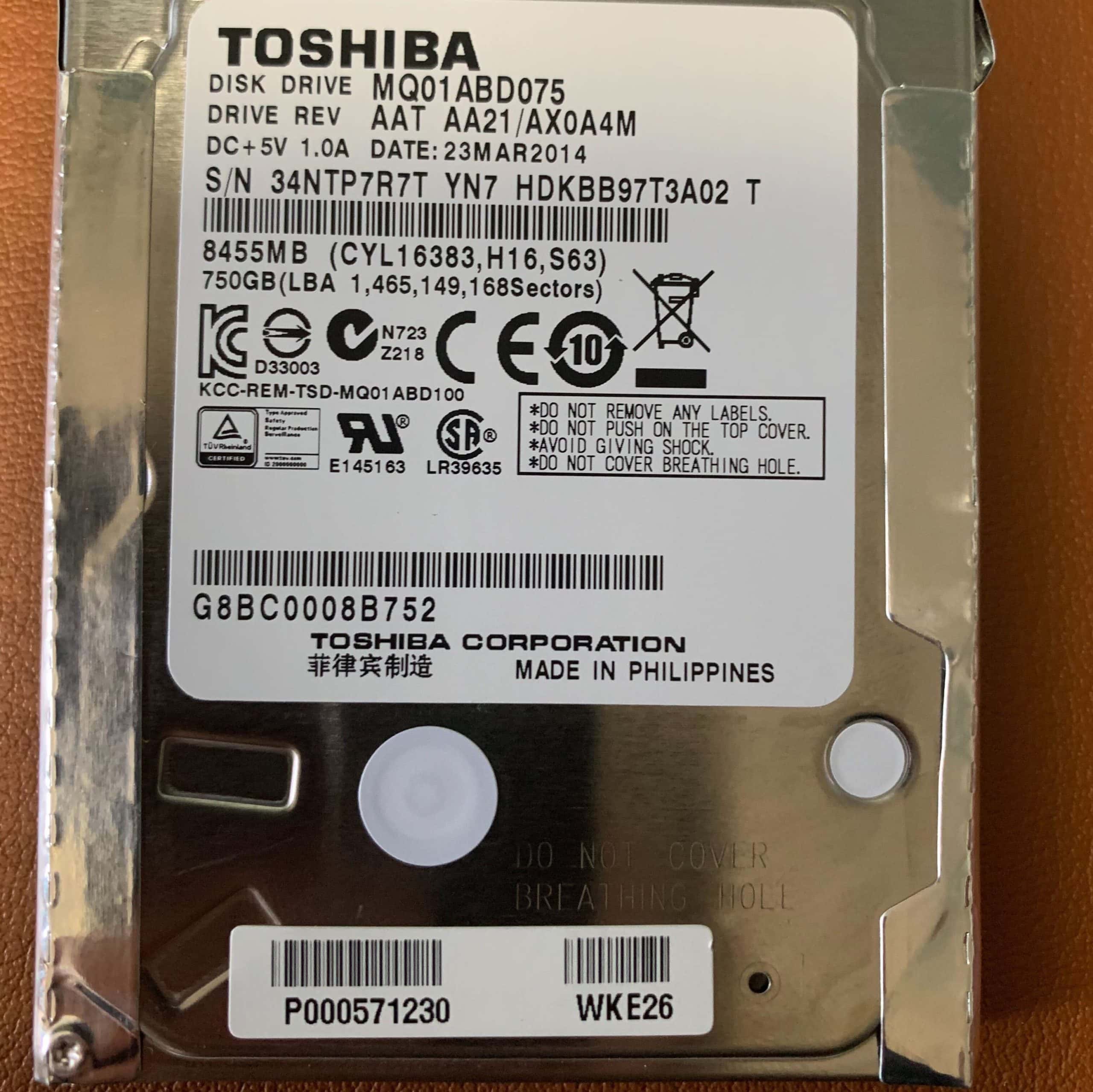This Toshiba HD Recovery would spin up, but would not be recognized by any computer. The customer had tried connecting it to a few different machines, but the drive would not be recognized by the computer at all. This client was looking for an affordable data recovery service to get back their important files.
Toshiba HD Recovery
When connected to the PC-3000 data recovery rig, the Toshiba hard drive would ID and I could launch the utility, but would not allow access to the data on the platters. This type of symptom is usually caused by a firmware issue on the drive.
I read all the firmware modules I could to find what the issue could be. In this case, the G-List had a lot of data present and could be corrupt. Anytime I see a lot of info in the G-list I clear it out before starting the imaging process, but in this case, I was hoping that clearing that module would allow access to the data on the platters.
After clearing that firmware module I had full access to the drive! I started with a quick heads test, and I found that Head 2 was weak in the drive. Other than head 2 being weak, everything else on the drive was passing diagnostics. It is very likely that this weak head caused the corruption in the firmware module. This means by clearing that module I would have full access, but I still had to contend with a weak head during the recovery process.
Imaging the data with a weak head
Now that all the data on the platters was accessible on this Toshiba HD recovery, I began the process of imaging all the sectors from this failing drive to a good drive. Because Head 2 was weak and slow, I imaged all the other heads first. Each head is in charge of its own data on the platters (usually one side of a platter), so if a head is weak or slow you can get all the other data first, which is safer than stressing out a weak or slow head.
Once I had all the data possible from the other good heads, I started the imager on Head 4 using very gentle settings. After some tweaks to the imaging settings and a few passes, I was able to get 99.9999% of the sectors on the drive. The idea here is to get as much as possible without stressing the weak head out, then increase the difficulty of the passes so you get as much data as possible from that weak head. In a recovery case like this one, I expect to complete 4-6 passes in total before I have as much as I am going to get.
Recovering MQ01ABD075
The catalog file was intact so I was able to see what data was on the drive and also see what files were part of the missing 0.0001%. The only missing files were in the system file area, which had no user data! This is a best-case scenario as it means all user data was recovered 100%.

Affordable data recovery service
This particular MQ01ABD075 hard drive recovery took about 2 days to complete and get back to the client. It fell under our affordable Standard Recovery Tier and the client was happy to have their data back at a great price.
If you would like me to work on your recovery project, please feel free to contact us or fill out our contact form below. Thanks for reading!

